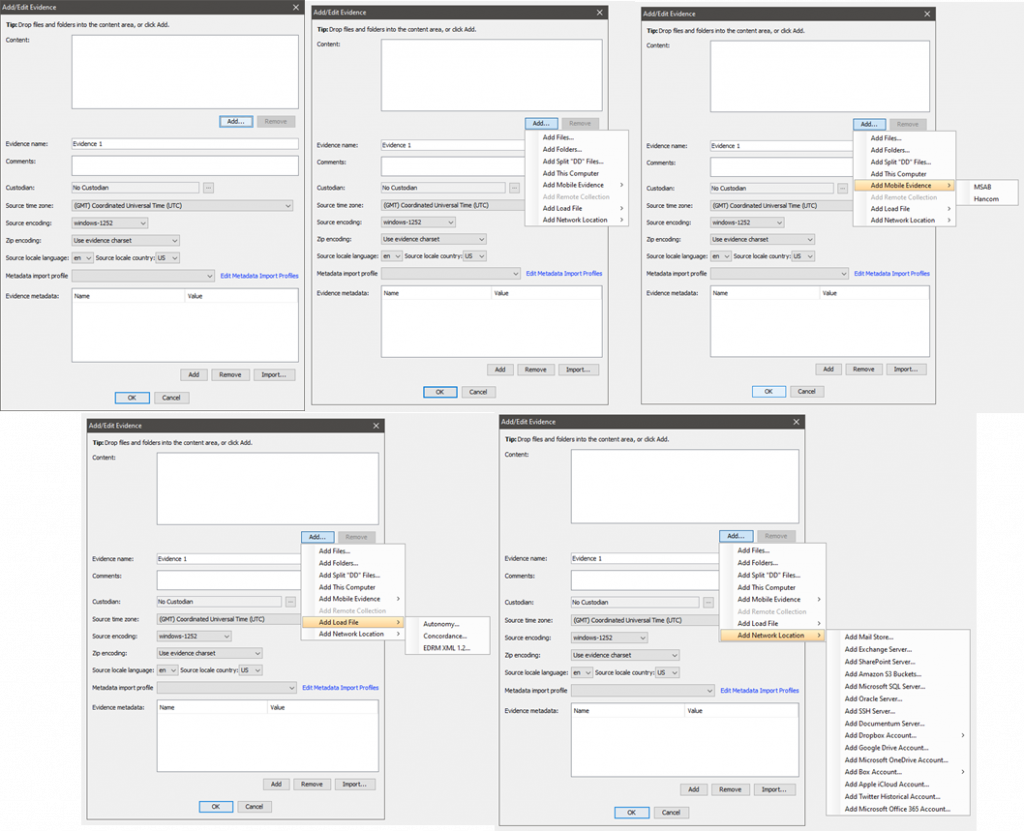
Relativity Processing vs. Nuix Workstation
Following up from my recent post regarding “The Benefits of Relativity Collect” I am continuing to explore the eco system of Relativity. My topic in this post is Relativity Processing and I am lining it up against processing powerhouse “Nuix Workstation”. This is possibly a little unfair on Relativity to put it up against the industry’s leading processing tool and maybe comparing against Nuix Discover’s ingestion would be a more realistic standard, but Relativity sets the bar high for its products and to be the best in this class it needs to beat the best in class.
As with other areas in the Relativity world you first need to set a profile, in this case a processing one. The first part of the profile determines how the numbering will work.

Inventory and Discover settings are limited to DeNISTing, OCR languages and Timezone and the ability to include or exclude certain file types.

Extraction settings are as complex as it gets for Relativity processing. In this section you determine how to handle child documents, format of Email output, Excel, PowerPoint and Word files extraction methods and OCR settings.

The final two sections are De-duplication settings and Publish settings.

In comparison, the Nuix Workstation processing profile can be set at the time of processing OR you can use a saved one. The settings are broken up into five sections:
- Data Processing Settings
- MIME Type Settings
- Parallel Processing Settings
- Decryption Keys
- Worker Script

There are significant differences between the complexities of what you can choose in the two applications. Relativity is limited to the very basics in comparison to Nuix, which allows for much deeper processing, for example deleted files, which isn’t possible in Relativity.
Loading data into processing is as detailed in both systems. As Relativity (One) is a web-based application it is a little bit clunky to move through. For instance, the following steps need to be completed before ingesting data:
- Create the custodians in the Entities tab – this is to allow the data to be linked to a custodian when it is loaded into review.
- Create a new password bank – any protected documents will be checked against the passwords stored in the bank.
- Create a new processing profile – as mentioned above, this is a standard step for any of the Relativity eco system applications.
- Create a new processing set – link this to the processing profile and where you can add the processing source data
- Add processing data source – enter the locations of where the data exists that is to be processed.
Nuix’s take on adding case evidence flows more fluently:
- Set the processing profile – either on the fly or use a saved one
- Add Evidence – It is possible to enter multiple evidence sources either for one custodian or multiple sources for multiple custodians; each additional custodian will require a separate click of the “Add” evidence button shown below.


Ingestion / Processing
Nuix processing really goes up a level here due to the one stage processing. Relativity requires the user to first ingest data and then filter it and then discover it before publishing. The power in the hand of the user of Nuix Workstation (NW) is unmatched by any of the SAAS eDiscovery platforms. From the number of file types that NW can handle to the flexibility, speed and precision of platform, it really does stand apart from its competition.
Reporting
The reporting out of Relativity is a powerful asset. There is a report at each stage prior to publishing:
- Inventory:

- Discovery:




Nuix produces a good case summary report once processing is complete:



Discover/Publish vs. Workstation
The one key differential is that in Nuix you can revisit the data set after it has been processed and interrogate it again and again, trying different search terms, date ranges, filters and exporting different sets. This you cannot do in Relativity: once you pass each section (Ingest | Discovery | Publish) you cannot go back.
Nuix Workstation has a really clean breakdown of file types which can be used to build searches, cull the data set or for basic review of what a document contains.

It is also very easy to see problem documents, such as encrypted, deleted, corrupted etc. Again, this is very clean and a great asset to Nuix Workstation.

In conclusion, I don’t think Relativity Processing will become the best processing tool as there are not currently any plans to be able to process forensic images and given that eDiscovery is very closely tied to digital forensics there will always be a requirement to do so. That said, I don’t want to take away from what Relativity Processing has in its locker. Like all Relativity products in the eco system it’s user friendly, though clunky in parts. One of my favourite features is the clear reporting at each stage of the processing and the ability to export something that is immediately client friendly is powerful. If the team develop along the big themes of their roadmap, then it will improve processing no end:
- New culling interface – being able to publish subsets of data based on criteria such as search terms.
- Improved file-type support – this is a must for any processing tool, you cannot stand still as new data types occur all the time.
- Drag and drop processing – this is a nice feature that will allow a user to process data from their desktops straight into RelativityOne.
All in all, I think Relativity Processing has come a long way since I first saw it and it stands up well to like-for-like competition (Reveal, Nuix Discover, Servient) but against Nuix Workstation and similar products it has a lot more to do. An impressive work in progress.

